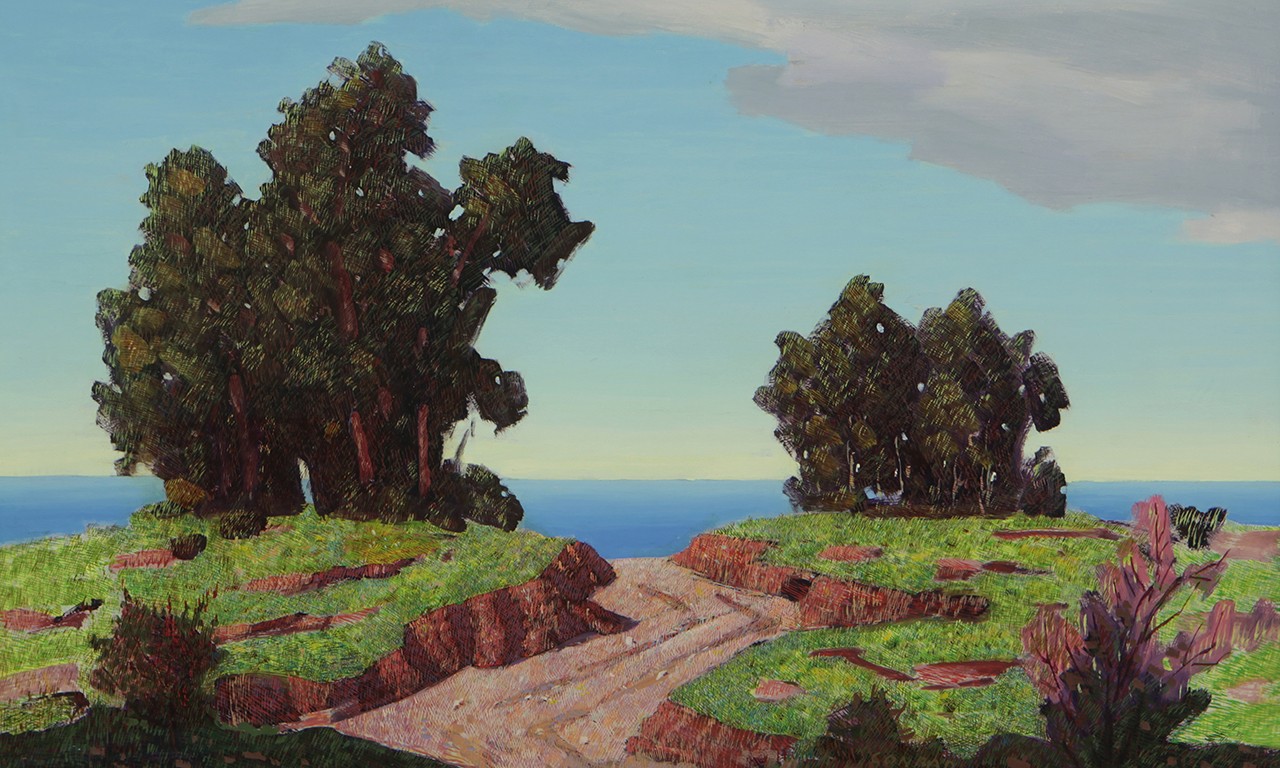 |
Ocean Vista, c. 1925
Conrad Buff (Swiss-born American, 1886-1975); Southern California
Oil on Masonite; 36 x 24 in.
91.47.4
Gift of Dr. and Mrs. Christian and Joyce Title |
(Con)Rad, With Bodacious Later Works
Rugged individualism remains an ingrained facet of American identity, but it is the combination of individualism and collaboration that create true masterpieces. Conrad Buff was a Swiss-born American artist who leveraged his totally unique arts education and years of working and collaborating with Californian artists—not the least of whom was his wife—to create paintings which were both highly individualistic and moderated by the standards of Southern Californian impressionism. This post looks at Conrad Buff’s backstory, style and his two paintings in the Bowers’ collections: one a cherished masterpiece on display in California Bounty: Image and Identity, 1850-1930 and the other a recently identified painting made in his native Switzerland.
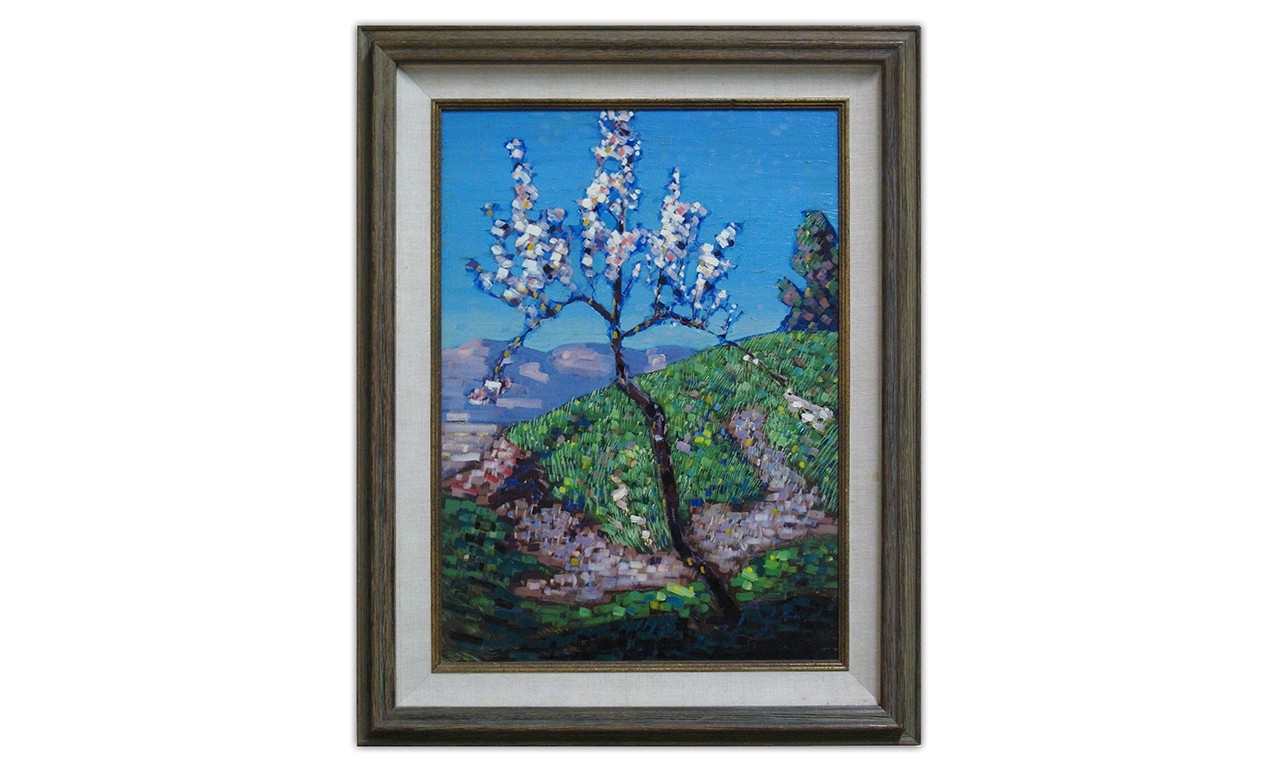 |
Peach Tree, 1965
Conrad Buff (Swiss-born American, 1886-1975); Switzerland
Oil on board; 23 1/4 × 16 7/8 in.
2019.11.1
Gift of Jack and Agnes Taylor |
Non-Native English Speicher
Buff was born in the small Swiss farming village of Speicher in 1886. He loved his mountain home and often cited the sights and sounds of his youth as happy memories. However, he was far less enamored with the local job prospects and took to the usual trades of the village with some hesitation. He had definite artistic sensibilities and traveled to St Gallen, Switzerland before the age of 18 to study lacemaking and embroidery. It was a teacher at this school that first inspired Buff to investigate drawing and art as a potential alternative to a traditional craft. Buff breathed the new medium in and a natural talent eventually drove him to the Royal Academy in Munich. His parents were less excited about this fickle career path and stopped sponsoring his education. Buff quickly ran out of funds and—making the same decision as so many Europeans of that time—decided to take the long boat trip across the Atlantic to the United States. In his early New World years, he travelled through the Midwest and finally made his way to California where he slowly began seeking out fine art opportunities.
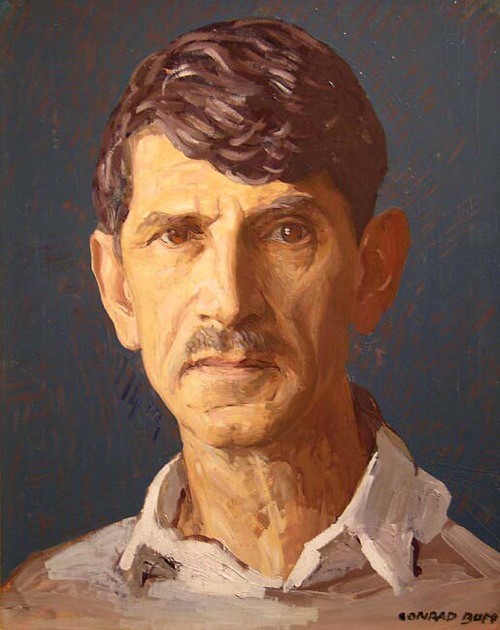 |
| Self-portrait of Conrad Buff |
What is it you Want, Mary?
When Conrad Buff first moved to California, he used his new freedom to begin exploring his art. His first projects were based around design work and painting and he reinvested what he made into more art classes. He began practicing fine art again for the first time since attending the Royal Academy. He took a variety of approaches to getting involved in the local scene, including working on projects with area artists. Each of these opportunities bred more connections and eventually pushed him towards the growing artist colony in Laguna Beach. With the money he made from his work he raised enough to purchase a summer home where he could work in Laguna. At the same he became interested in getting his works exhibited in local museums. When he submitted his paintings to the Los Angeles County Museum of Art (LACMA) he met Mary Marsh, LACMA’s Assistant Curator of Fine Art and a painter herself. The two fell in love and worked together on a series of acclaimed children’s books which Buff illustrated.
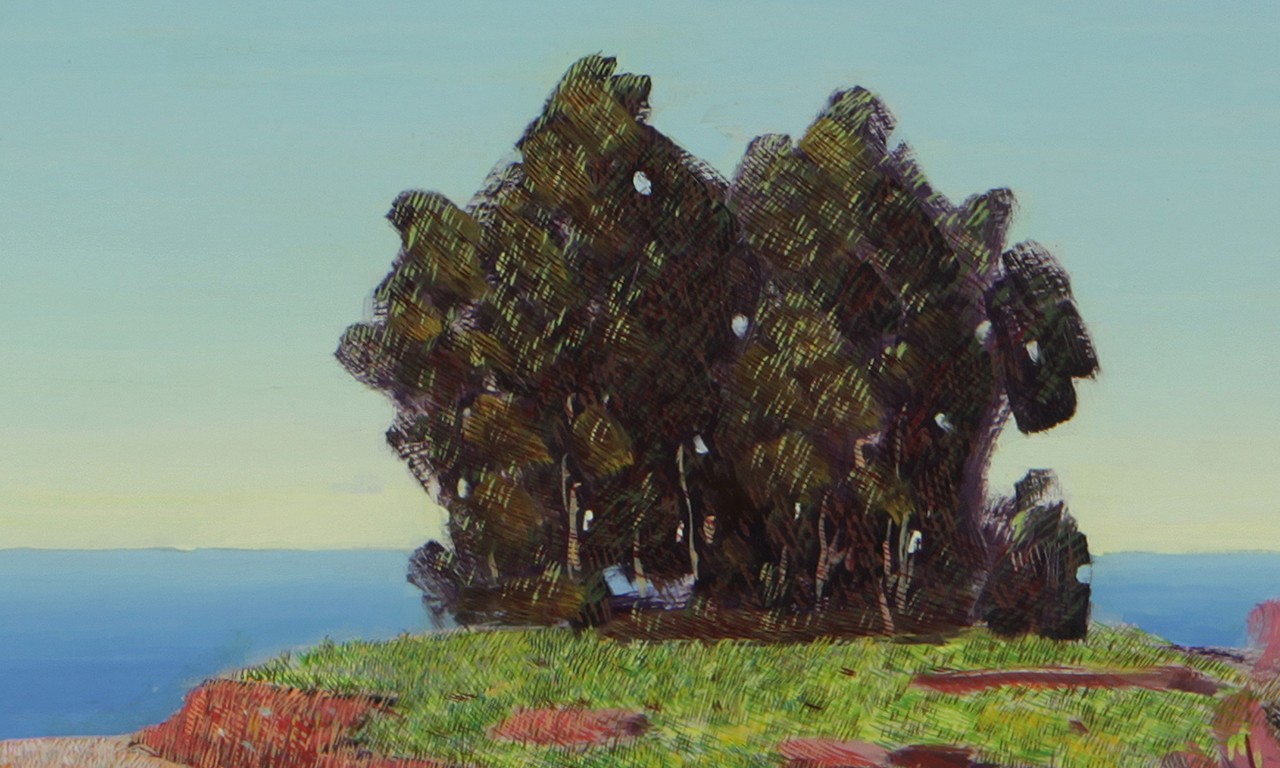 |
| Detail of 91.47.4 |
Cross-Hatching a Plan
Buff’s relative lack of formal artistic training made for a style that was almost entirely unique. Certainly, he found himself pulled magnetically to many of the same subjects that drew the attention of other early Californian impressionists: Pacific bluffs, the High Sierra’s stark peaks and naturally forming lakes that echoed the vast pools of his alpine homeland, and the Southwest’s endless and stoic desert. More than just subject matter though, time in the Golden State and projects with other notable artists like Edgar Alwin Payne noticeably affected his style in terms of proportion and the degree of naturalism found in his works. These influences are particularly notable in early works such as Ocean Vista. Buff always added a twist to make his works his own. In both Ocean Vista and Peach Tree, we see that a layer of fine crosshatching has been added over the work to add texture, color variation and to dynamize the landscapes. One critic poignantly noted that the lattice Buff added over his early works almost appeared to be like the lacework that Buff had trained in as a young man. Buff’s individualistic style continued to develop as aesthetics evolved. His work in printmaking led him to include Pointillism in his mid-century work but he eventually tended towards highly geometrized abstraction with thick, distinct bands of color representing nature’s seamless gradients.
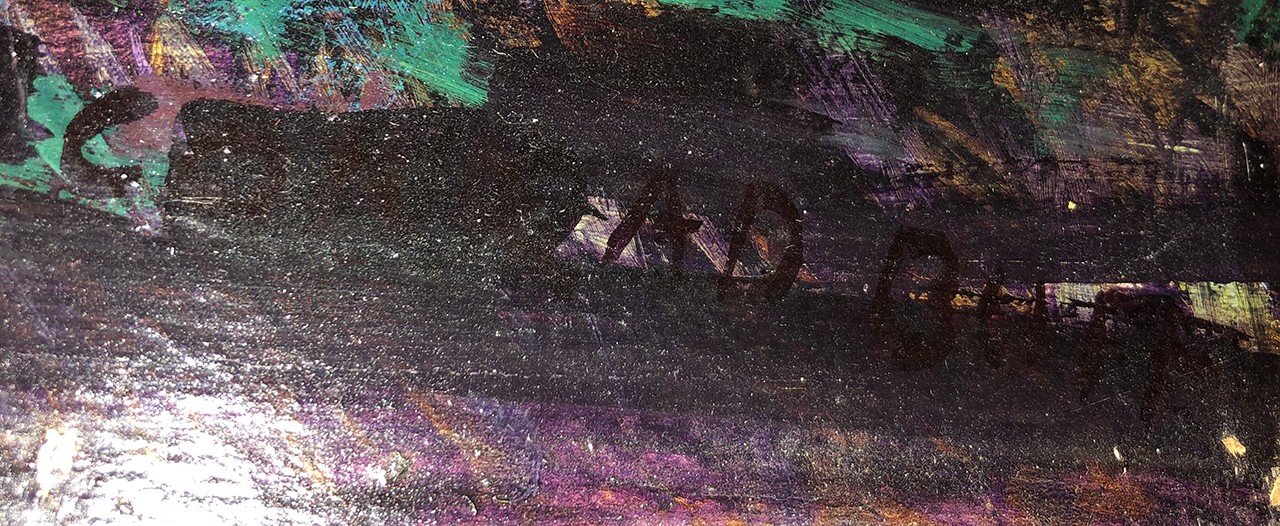 |
| Detail of 2019.11.1 |
Bluff or Buff?
The first of the two Buff paintings donated to the Bowers Museum followed a standard trajectory. Ocean Vista was donated in 1991—well after the artist’s 1975 passing—by Dr. Christian Title, a Malibu resident who was himself an artist. The more recently donated of the two paintings originally came to the museum in 1999. The donor had inherited the painting and knew nothing about it except for its title, Peach Tree, and a mysterious note that read “Switzerland, 1965,” so the painting originally entered the museum as an unattributed piece. It was not until 2016 when the bottom of the painting was held under direct light that Collections staff noticed there was a small black on black signature at the bottom of the work that read Conrad Buff. In June of 2018 an expert examined the painting, confirmed that it was a Buff. Though Peach Tree has been dated according to the note, the similarities in style between it and Ocean Vista seem to indicate that the two were created during the same period in Buff’s life, rather than 40 years apart.
Text and images may be under copyright. Please contact Collection Department for permission to use. References are available on request. Information subject to change upon further research.






Comments 1
I love his self-portrait. Tells so much about his character.